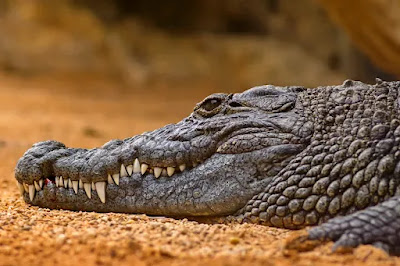Alligators
Common Name: American Alligator
Scientific Name: Alligator Mississippiensis
Type: Reptile
Diet: Carnivore
Group Name: Alligator Compound
Average Lifespan in the Wild: 35 to 50 Years
Size: 10 to 15 Feet
Weight: 1,000 Pounds
Once on the brink of extinction, over a million of these reptiles still survive today. The main threat to alligators now is habitat destruction, resulting from human activities such as draining and developing wetlands.
American alligators live in the wild in the southeastern United States. You're most likely to see them in Florida and Louisiana, where they inhabit rivers, lakes, ponds, swamps, creeks, and marshes. These reptiles are somewhat slow on land, but they are designed for life in the water. They are adept swimmers, equipped with webbed feet and powerful tails that propel them through the water.
The average male American alligator is three to five meters (10 to 15 feet) long. Its massive, powerful tail makes up half its length. An alligator can weigh up to half a ton (1,000 pounds), with males weighing between 227 and 272 kilograms (500 and 600 pounds). Females are typically smaller than males.
Despite their size and ferocity, the female alligator appears to be a gentle mother. She builds a nest on the beach, where she lays her eggs. She then guards them until they hatch. At this point, the young begin to make sounds, and the mother hears their chirps as they emerge from the eggs. She gently carries them—in her mouth—to the nearby water.
Newly hatched alligators are only 15 to 20 centimeters (6 to 8 inches) long and are extremely impressionable. Their mothers protect them from predators, including raccoons, lynx, birds, and even other alligators. Alligator pups stay with their mothers for up to two years. After that, they are able to fend for themselves.

